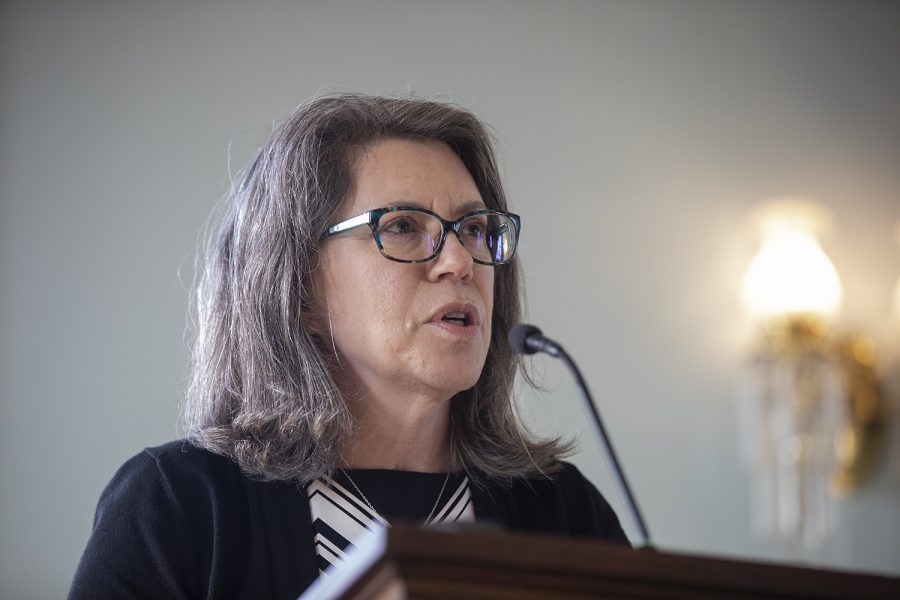UI Faculty Senate talks catastrophic-leave program and phase two of policy changes
Faculty Senate discussed the second phase of updates to the catastrophic-leave program, which aims to create a central donation pool and to organize the ways in which leave is donated and received.
Faculty Senate President Sandra Daack-Hirsch speaks during the Faculty Senate meeting on April 23, 2019.
February 11, 2020
The University of Iowa Faculty Senate on Tuesday planned for the second phase of the catastrophic-leave policy, discussing how vacation-leave time is donated and received to faculty or staff who need to take leave for catastrophic illnesses.
University of Iowa Faculty and Staff Disability Services Director Nathan Stucky provided an update on the next step in the catastrophic-leave policy at the shared-governance branch’s Tuesday meeting in the Old Capitol Senate Chambers.
Sick leave cannot currently be donated to other individuals, but Stucky said there are efforts to fix and improve how donations are received.
“We want to create a centralized pool of sorts that anyone in the catastrophic-leave program can pull out of,” Stucky said.
He said the second phase will include a total review of the program, exploring how donations are requested and where they come from. One of the review methods included updating the website so that it presents the program’s stance on confidentiality between faculty and staff in a clear and easily accessible way.
Stucky said university officials are spending a significant amount of time on confidentiality because of concerns that were brought up by multiple users of the program.
“We are working to figure out how we keep the application process and the donation allocations confidential without [faculty’s] names going across the entire campus,” he said.
RELATED: Fixed-term faculty protest catastrophic-leave policy outside UI Faculty Senate meeting
The updated program follows the state Board of Regents’ November 2019 approval of the policy change. The changes included modifying eligibility for catastrophic-leave donations to include all vacation and sick-leave-accruing faculty and staff members with a 50 percent or greater regular appointment.
“Senior administration has been very supportive as well, so we do think that we can move ahead with at least some of these goals,” said UI Faculty Senate Past President Russ Ganim, now the International Programs dean, in an October Faculty Senate meeting.
The program’s first step went into effect Jan. 1, Stucky said, and extended its reach to include faculty and staff members who have been on campus for nine months. Those individuals used to only be able to leave work for medical emergencies, he added.
Faculty Senate President Sandra Daack-Hirsch said in November that the first step of revising the program through this new policy meant allowing the UI to meet faculty needs while the Faculty Senate continued to work on the next phase of the program.
“With this change, Faculty Senate will now work with colleagues in [UI Human Resources] to improve the processes by which employees donate and request time,” Daack-Hirsch said in the November meeting.
The catastrophic-leave program also improved upon their communication plan by reaching out to UI Human Resources within various departments on campus, Stucky said.
He said each office has been helpful in spreading awareness about the program’s new additions, and those who use it can reach out to Human Resources within their department to receive the information they need.
“I feel very strongly about the [catastrophic-leave] donation policy,” Daack-Hirsch said in November about the program. “I think this is an important issue for faculty on campus.”



